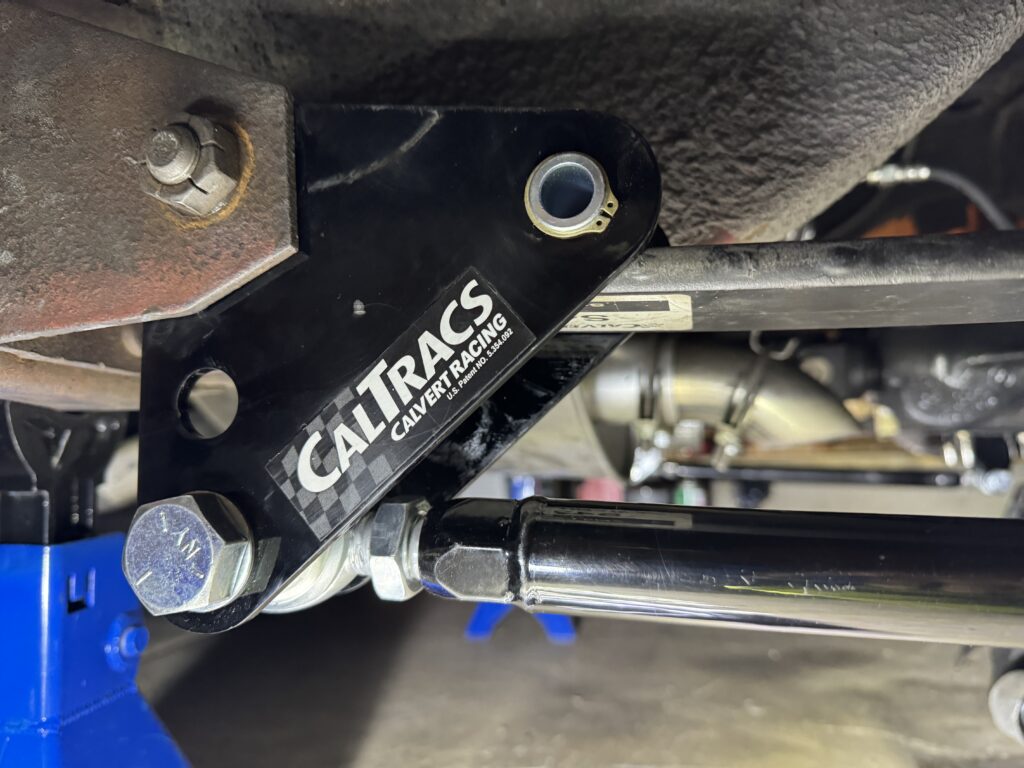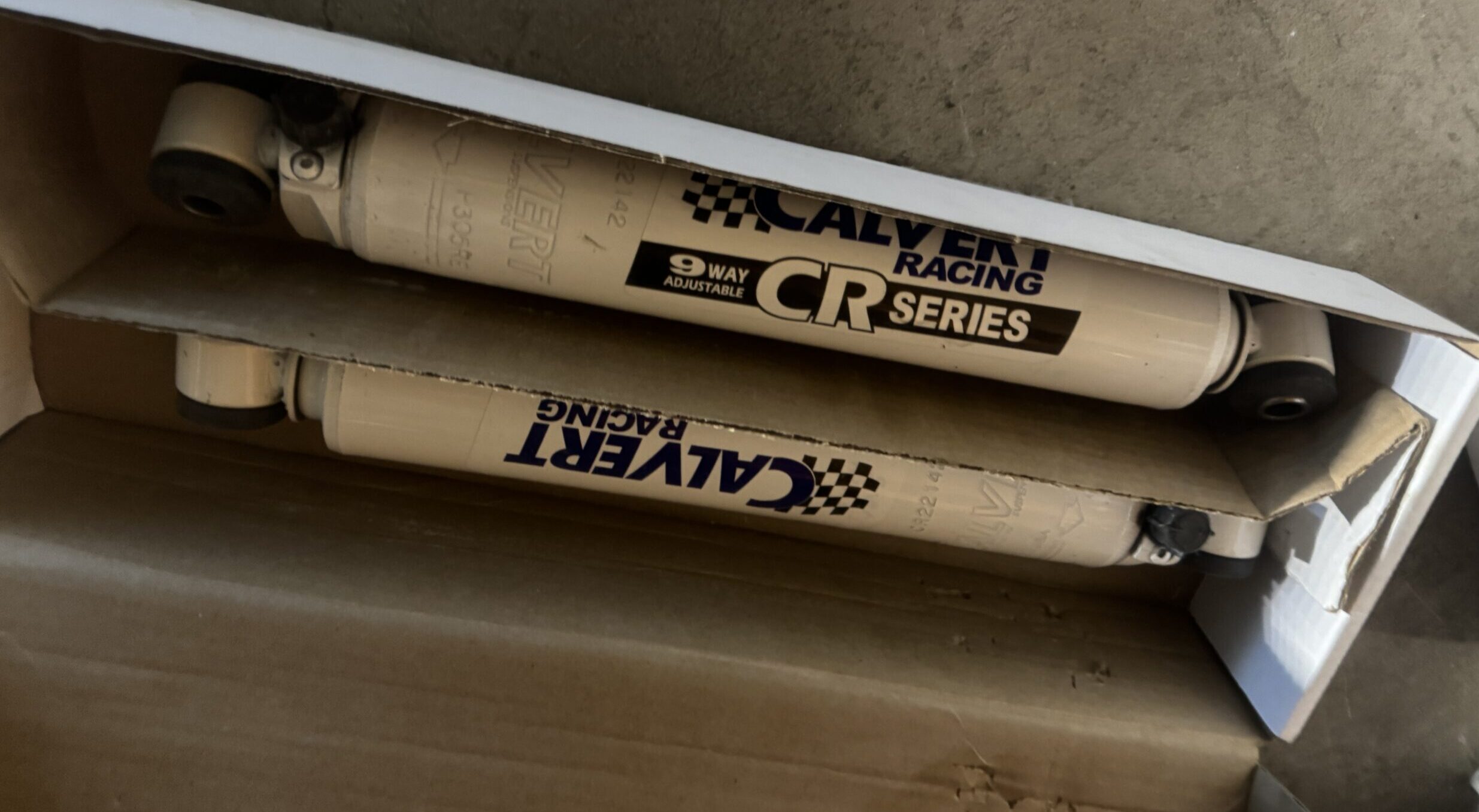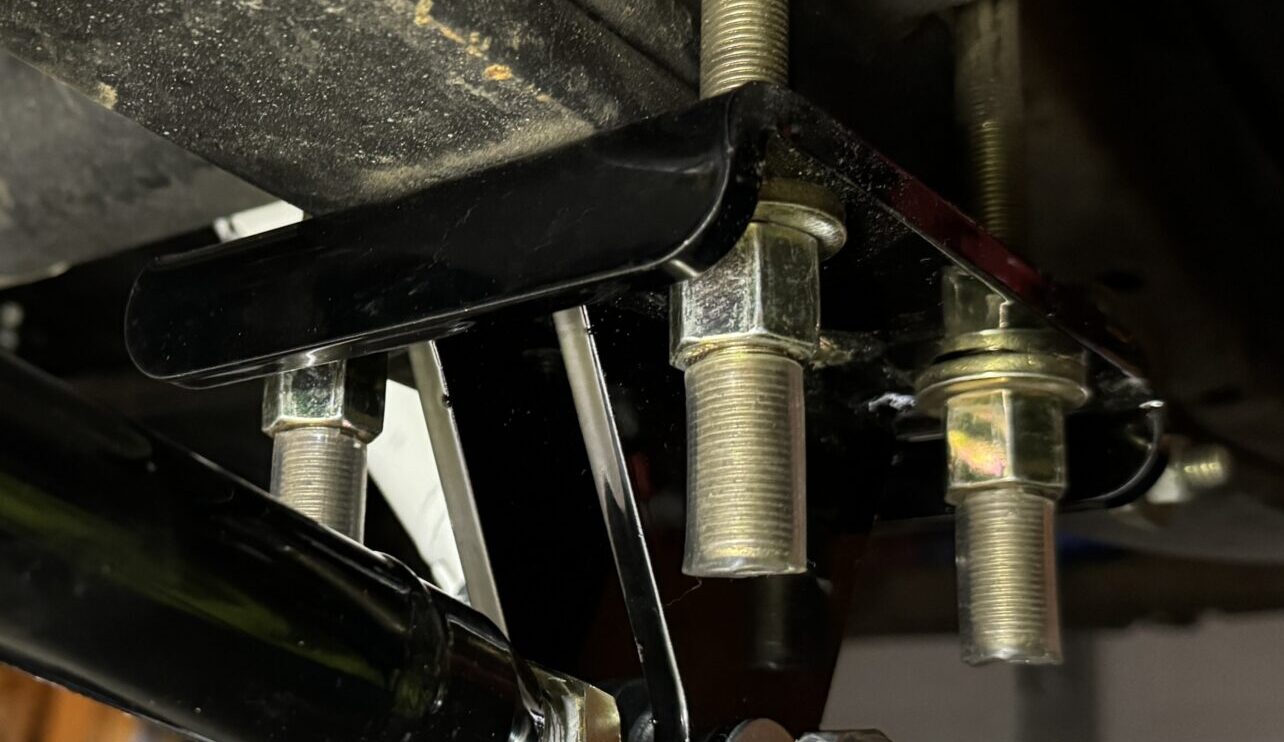
Adding to the traction game with CalTracs
It’s been a while since we had a major task to tackle on Project 68 so it was exciting to see Calvert Racing boxes show up as we throw Caltracs and their adjustable shocks on the Charger.

The Calvert Racing story is a legendary one. John Calvert tried all kinds of racing before deciding to concentrate on drag racing because it focused on the skill and reflexes of the driver and the performance of the car. After purchasing his first stock race car, a 1957 Ford Fairlane, he won his first round in 1970 at Edwards Air Force Base in California, would go on to win the 1991 Winston World Championship and set the sportsman stock race world on fire.
John opened Calvert Racing Suspensions in 1991 out of his garage. The Calvert plant is now located in Lancaster, California, and holds several patents. Love that they’re a USA company and we’ve had really great success in the past with their product in 10-second trans brake cars as well as street cars. They manufacture the CalTracs Traction Bars, Three-Link Kits, split mono leaf springs, shocks, wheelie bars, and other suspension race parts designed specifically to improve racing times and address some of the issues that stock car racers face in street, strip or drag racing.

I purchased the split mono-leaf springs last year with anticipation that eventually the full Caltracs system would go on the car and also plan to swap out the cheap oem shocks.
CalTracs are a patented traction bar system designed to solve major issues with Leafspring Suspensions in drag racing or other hard acceleration, such as axle wrap, wheel hop, and wheel spin on take off. Who am I to describe their product though? Straight from their website.
“As you throttle, the axle will have a tendency to wrap, which will push the Calvert Force Transfer Link forward. The pivot at the front leaf eyelet then forces the pin riding on top of the springs downward into the spring pack itself. This downward force of the pin on the leaf springs causes downforce on the entire axle assembly and pushes your tires down onto the pavement/dirt. The harder you’re on the throttle, the harder the downward force on your tires.”

This is best illustrated real-time when you watch the aluminum bushing move upward or downward pressing against the leaf spring as you adjust the chrome moly bar pushing against the triangle angle, simulating the throttling or transfer of power from car to ground. This is also where you add or subtract pre-load. Under load, the bushing is pushing down against the spring, pushing the entire axle assembly downward.
Well aware that I will be at several remote race tracks this year with unknown traction conditions, I figured the better I can help the car now to prepare for the elements whether good or bad, the better. Already having the split mono-leaf spring, installation took about two hours. CalTracs biggest need is to push in the aluminum bushing on the front eye but because of the split mono-leaf install last year, that process is already done. So if you do go CalTracs, prepare with a press and jaws of some sort unless you are already set up for the process and because all the elements are aluminum, stray away from using sheer force in the form of a hammer.
Jack up the frame. Brace the rear end. Play with tension on the rear end based on where you are in the process so the pinion doesn’t rotate forward and the system bolts on seamlessly. I will be playing around with both pre-load as well as adjustability on the shocks.

Being a footbrake car, typical settings call for a firmer 6 to 9 on the shocks (trans brake cars being the opposite 1 through 5) and we’ll begin testing with little to no preload as a basepoint. Every car is different with how they react so adding or taking away the pre-load by turning the bar is your simple and easy adjustment that can be done with an adjustable wrench.
Aside from the suspension, one tip that hopefully you’re already taking advantage of that I would share is clear line or tape over your U-Bolt threads. Talk about a lifesaver when you return to the bolts. After a year of racing and street-driving with these on, the nuts fly off by hand and save me from eventually destroyed knuckles, a few cuss words and likely turning to a torch.
Excited to report back the results of the add but no doubts in my mind from past projects that the CalTracs system is a massive assistance in launching off the line the way you want, how you want.





More Stories
ET Finals and Final Points
Back On Track!
Calvert Racing Feature for Project 68!